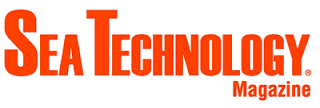May 12, 2016 | Engineering + Technology

This article first appeared in the April 2016 issue of Sea Technology Magazine.
WRA campaigns on terrestrial sites have traditionally been performed using meteorological towers equipped with wind and weather sensors, which record data for at least one year to help characterize long-term wind conditions. In the realm of offshore wind energy development, however, conventional met towers are both prohibitively expensive to install and extremely time consuming to permit. Furthermore, as fixed point measurements, they present both a challenge in spatial representativeness (since a single met tower typically cannot represent the potential wind resource variability in a large offshore project site) and in long-term value (since a met tower located in the middle of a future turbine array becomes far less useful as a meteorological reference once the wind farm is built, thanks to wakes from adjacent wind turbines disrupting the wind resource to be measured).
In recent years, floating Lidar buoys that profile vertically have gained significant traction as low-cost and quick-to-deploy alternatives to conventional offshore met towers.
